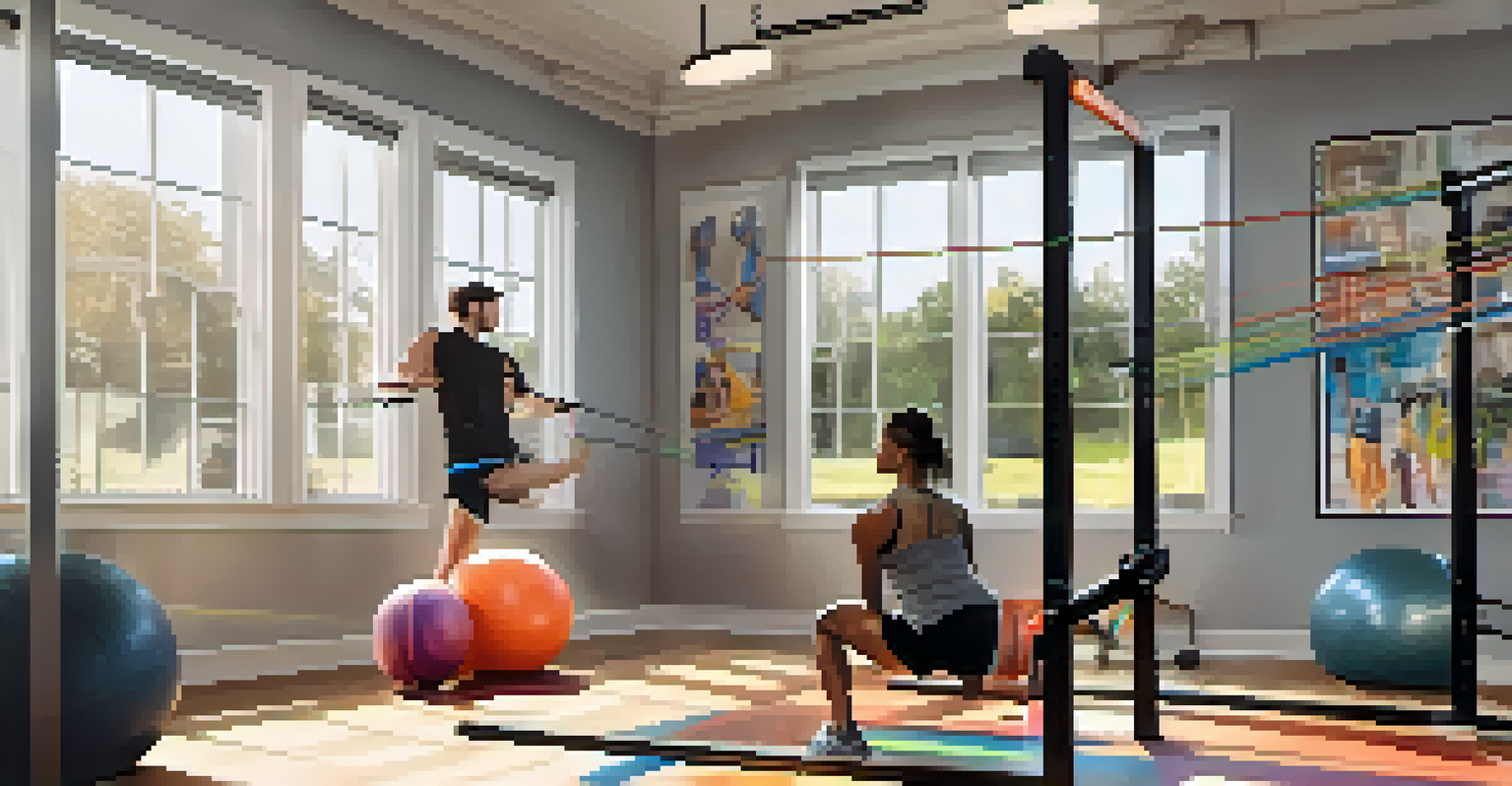Rehabilitation Techniques for Common Sports Injuries

Understanding Sports Injuries: Causes and Impact
Sports injuries can occur due to various reasons, ranging from improper technique to overuse. Understanding these causes is crucial for effective rehabilitation. For instance, a runner might develop shin splints from poor footwear or running on hard surfaces.
Injury is just a stepping stone to greatness.
The impact of these injuries can be both physical and psychological, affecting not only performance but also mental well-being. Athletes may feel frustrated or anxious about their recovery process. This emotional aspect is just as important as the physical recovery.
By recognizing the underlying causes and effects, athletes can better prepare themselves for rehabilitation. This holistic approach ensures that they address both the injury and their overall mental health.
Initial Response: RICE Method for Acute Injuries
The RICE method—Rest, Ice, Compression, and Elevation—is a widely recommended first response to acute sports injuries. This technique helps reduce swelling and alleviates pain, setting the stage for recovery. For example, if an athlete twists an ankle, applying RICE can significantly minimize damage.

Rest is essential to prevent further injury, while ice helps numb the area and reduces inflammation. Compression with a bandage aids in controlling swelling, and elevating the injured limb promotes blood flow towards the heart, speeding up healing.
Understanding Injury Causes
Recognizing the causes of sports injuries is essential for effective rehabilitation and addressing both physical and mental health.
Implementing the RICE method immediately after an injury can make a substantial difference in recovery time. Following this technique can pave the way for more advanced rehabilitation techniques later on.
Physical Therapy: Tailored Rehabilitation Programs
Physical therapy plays a crucial role in rehabilitation, focusing on tailored exercises designed to strengthen the injured area. For instance, after a knee injury, a therapist may create a program that gradually increases mobility and strength. This personalized approach ensures that athletes recover effectively and safely.
The greatest glory in living lies not in never falling, but in rising every time we fall.
Therapists often use techniques such as manual therapy, ultrasound, and electrical stimulation to aid recovery. These methods not only help in relieving pain but also enhance blood circulation and promote healing.
Engaging with a physical therapist allows athletes to track their progress and make necessary adjustments. This collaborative effort fosters a sense of accountability, motivating athletes to stick to their rehabilitation regimen.
Strengthening Exercises: Building Resilience After Injury
Once the initial pain subsides, incorporating strengthening exercises is vital for long-term recovery. These exercises focus on rebuilding muscle strength and stability, which are crucial for preventing future injuries. For example, after recovering from a shoulder injury, an athlete might engage in resistance band exercises to regain strength.
Strengthening not only helps in recovery but also enhances performance. Athletes who focus on conditioning their muscles post-injury often find themselves performing better than before. It's like rebuilding a house with stronger materials after a storm.
RICE Method for Initial Care
The RICE method—Rest, Ice, Compression, Elevation—provides a crucial first response to acute injuries, aiding in pain relief and recovery.
Ensuring a strong foundation through these exercises can lead to enhanced athletic performance and reduced risk of re-injury. This proactive approach is essential for athletes who want to return to their sport with confidence.
Flexibility Training: Importance in Injury Prevention
Flexibility training is often overlooked but is essential in both rehabilitation and injury prevention. Stretching exercises improve the range of motion, which can help in avoiding strains and sprains. For instance, incorporating dynamic stretches before a game can prepare muscles for action and reduce injury risk.
Additionally, regular flexibility routines post-rehabilitation can keep muscles supple and responsive. This practice aids in maintaining balance and coordination, key factors in athletic performance. Think of it as oiling the hinges of a door to ensure it swings smoothly.
By emphasizing flexibility, athletes can ensure that their bodies adapt to the demands of their sport. This not only promotes longevity in their athletic careers but also enhances overall performance.
Mental Strategies: Overcoming Psychological Barriers
Rehabilitation is not just about physical recovery; mental strategies play a crucial role in overcoming psychological barriers. Injured athletes often face fears of re-injury or doubts about their abilities. Implementing visualization techniques, where athletes imagine themselves succeeding, can significantly boost their confidence.
Mindfulness practices, such as meditation, can also help manage anxiety and stress during recovery. By fostering a positive mindset, athletes can navigate their rehabilitation journey more effectively. It's similar to steering a ship through a storm with a clear vision of the shore ahead.
Importance of Gradual Return
A gradual return to sport is vital for minimizing the risk of re-injury and ensuring athletes are fully prepared for high-intensity activities.
Addressing mental health in conjunction with physical recovery creates a comprehensive rehabilitation plan. This dual focus can expedite healing and prepare athletes for a successful return to their sport.
Gradual Return to Sport: Key to Long-Term Success
A gradual return to sport is crucial for ensuring that athletes are fully ready before resuming high-intensity activities. Jumping back in too soon can lead to setbacks, making patience a key component of rehabilitation. Athletes should follow a structured plan that gradually increases their activity level.
Monitoring how the body responds during this transition is essential. Simple practices like keeping a training log can help athletes track their progress and identify any signs of discomfort early. This proactive approach is like tuning an instrument before a performance.

By taking the time to properly reintegrate into their sport, athletes can minimize the risk of re-injury and set themselves up for long-term success. This careful approach ensures a smoother, more confident return to their athletic pursuits.